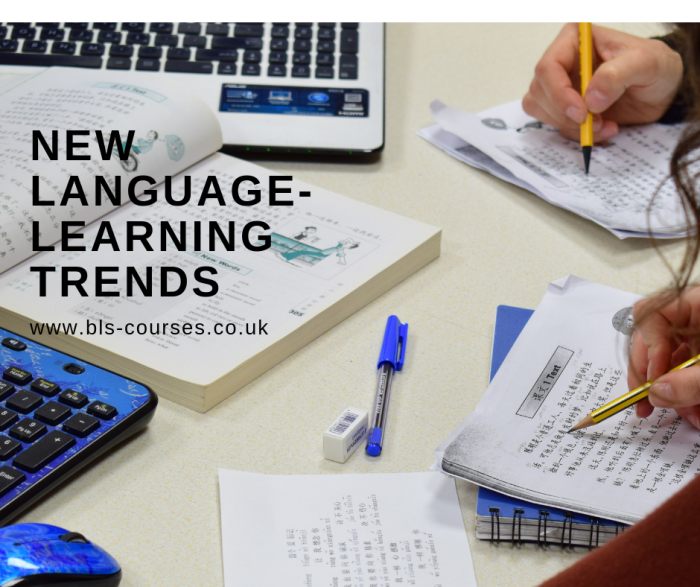Welcome to my first blog post of 2019! Before I start, I would like to wish you all Buon Anno / Bonne Année / Prospero Año Nuevo / ةديعس ةديدج ةنس / Fröhes Neues Jahr / Gelukkig Nieuwjaar / Szczęśliwego Nowego Roku / Feliz Ano Novo / Поздравляю с Новым годом / Happy New Year!
We hope you are ready for and looking forward to your lessons with BLS this year. In this blog post, we look at which will be the language learning trends you can follow in 2019 to help boost your language skills.
Artificial Intelligence (AI)
Artificial intelligence in language learning is mainly found in online language-learning tools. It means learners are accompanied and supported in their learning by intelligent programmes that can track their learning or even make their learning interactive. When language learning is interactive, it is more effective. Compare how much you learn and how motivated you are when speaking to people in your new language with your experience of learning from a book. This shows you how interaction makes language learning more fun and therefore means that you are more likely to remember what you have learnt. AI can foster interaction through “chatbots” that ask you questions or prompt you to give an answer, and congratulate you when you answer correctly. Even though they are not real people, they make learners aware of how much progress they are making and therefore keep them motivated. One article even goes as far as to say that people take less time to learn a language with the help of AI than they do using traditional language learning methods.
Adaptive Learning
Adaptive learning uses technology to deliver personalized, customised learning. Adaptive learning adjusts the trajectory and pace of learning, giving appropriately-pitched and relevant material to meet learners’ needs. If learners need to learn something specific, such as business language in order to meet international colleagues or phrases to use on holiday, adaptive learning provides them with focused training modules. Adaptive learning programmes use algorithms to gauge learners’ needs. For example, when the learner takes a test, the algorithms measure the learner’s understanding and identifies gaps in the learner’s knowledge. The programme then and adapts the modules to be taken to the learner’s ongoing learning needs. This approach helps the learner to focus on progress and what they need to learn rather than what they already know (although repetition is always useful!). This creates better learner engagement because they don’t get bored. This will improve their performance.
Gamification
“Gamification” or “game-based learning” means using the principles of gameplay in non-game contexts. Gamification is used to encourage user engagement, productivity, employee recruitment, physical exercise, voter apathy, and more by making engagement fun and by rewarding “players” for doing certain things. It is meant to empower and engage learners. Examples of how this can be applied in language learning is a computerised programme that allows learners to collect points for each correct answer and reach the next level of difficulty, or creating a language-learning board game. Research shows that gamification mostly has positive effects on individuals, improves retention rates and helps learners apply their learning better. Studies have also shown that games release happy hormones like dopamine and serotonin that will make learners want to return to their learning.
Video-Based Learning
Videos are a very popular training tool at the moment. There is a wealth of language-learning videos on the internet. They are popular because learners can choose which videos they want to watch and how many times they watch them, and because they break learning into manageable chunks. The availability of this type of material means that users can pick and choose from a whole host of different teaching styles and content. Individuals can create their own videos; it is not just language schools that create them. This gives the content a personal touch that means that learners like them. Users can also comment on videos and ask questions that means they engage with the content.
Social Learning
Thankfully, we still want to interact with our fellow humans and it has been proven (unsurprisingly) that learning with our peers is more effective than learning on our own. “Social learning” harnesses that concept. It can mean groups working on a specific project, conversation tables, sharing sessions (where one learner shares what they have learnt with the others and their interest in their chosen subject rubs off on the other learners), and learning circles, where learners share wisdom and work out a problem together, as well as practising listening and speaking skills.
We hope these different techniques inspire you to continue your journey into learning a language. Happy language learning in 2019!
Suzannah Young

